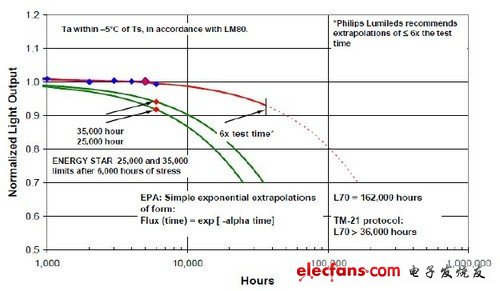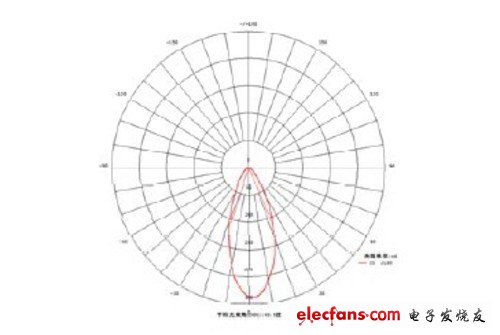The rapid development of LED technology, the continuous improvement of light efficiency, and the rapid development of LED spotlight technology. At present, LED spotlights are mainly based on replacing traditional halogen lamps. Compared with traditional lamps, LED spotlights have significant advantages in energy saving and long life. As the cost of LED spotlights has decreased, the application of LED spotlights has gradually begun to gain popularity. "Comprehensive Analysis of LED Spotlights and Luminaires" is divided into upper and lower episodes. In the last episode, I will start with the technical requirements of LED spotlights, common specifications and structures. (1) LED spotlight technical requirements At present, LED spotlights mainly replace traditional tungsten halogen lamps. The relevant safety requirements mostly refer to traditional lighting requirements, and a set of safety certification standards has been formed according to the characteristics of LED lamps. At present, the certification of LED spotlights is mainly based on European CE and North American UL certification, and voluntary certification (CQC) can be conducted in China. The CE certification includes LVD and EMC. LVD is implemented according to the EN60968 standard (IEC 62560 will be upgraded); EMC is implemented according to the EN55015, EN61547, EN61000-3-2 and EN61000-3-3 standards. In addition, LED lights usually require additional reference to IEC 62471 for photobiological safety testing. In North America, UL safety and FCC electromagnetic compatibility certification are usually required. UL implementation standards are UL1993, UL8750 and UL1310; FCC implementation standards are FCC PART15 Subpart B. In China, voluntary certification (CQC) is adopted for LED spotlights, and the implementation standards are GB24906-2010 (safety) and GB 17743-2007 (electromagnetic compatibility). In addition, in terms of the performance of LED spotlights, there are many standards. The United States has Energy Star (ENERGY STAR) has relevant requirements; China has energy-saving certification requirements, the implementation standard is CQC 3129-2010. Among these requirements, the color temperature, color rendering index, initial luminous flux, luminous efficiency, luminous flux maintenance rate, life span, central light intensity, nominal power, power factor, product identification, etc. of the LED spotlight are all stipulated. Extrapolation formula The lifespan of many electronic products is judged by being broken, but LED is a light source with a long life, which can be used for a long time and will not be damaged. However, the output of luminous flux will decay with time, so the industry usually uses the time required for the light to decay to 70% to define the life of the LED light source, that is, L70. With the advancement of technology, the light decay of LEDs is getting slower and slower, and it is difficult to completely test the time of the light decay to 70%. Because the life of electronic products is exponential, LEDs usually undergo aging for a shorter period of time. By sampling the light decay data, and then using an exponential function to estimate the time of its light decay to 70%, the calculation formula is shown in the figure above. LED spotlight specifications and types ◠Common LED spotlight specifications and types Lumen Maintains (LM) is usually tested for 6000 hours of LED aging. According to the exponential law, if LM> 91.8% after 6000 hours, a life of 25,000 hours can be declared, and if LM> 94.1%, 35,000 can be declared Hours of life, but the estimated life time does not exceed 6 times the test time. Figure 1: Light attenuation index curve Figure 2: Polar coordinate light intensity distribution curve of LED spotlight The angle of the LED spotlight is generally defined by the beam angle of 50% of the peak light intensity. As shown in Figure 2 is the polar coordinate light intensity distribution curve of an LED spotlight. It can be seen that the angle corresponding to 50% light intensity is about ± 20 °, so the angle of this spotlight is 40 °. (2) Specifications and types of common LED spotlights Figure 3: Different lamp heads (E14, E17, E26, E27, GU10, GU5.3 from left to right) At present, LED spotlights are mainly used to replace traditional tungsten halogen lamps, so the external dimensions refer to the IEC 60630 standard, and the lamp caps refer to the IEC 60061-1 standard. According to the situation of traditional spotlights, the current LED spotlights are mainly MR16, PAR16, PAR20, PAR30, PAR38. Among them, MR16 usually uses GU5.3 lamp head; PAR16 mainly uses GU10, E26 (Americas) / E27 (Europe and China), E14 lamp head; PAR20 / PA30 / PAR38 mainly uses E26, E27 lamp head. Brief analysis of LED spotlight structure 3 Way Power Divider,3 Way Rf Splitter,16 Way Power Divider,12 Way Power Divider Chengdu Zysen Technology Co., Ltd. , https://www.zysenmw.com


